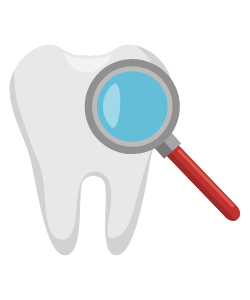Anyone with gap-free dental insurance will, quite rightly, try to maximise this area of their coverage to reduce their dental bills. This type of dental insurance allows you to claim the total cost of certain dental procedures if you use a dentist who's a member of your insurer's provider network. How does it work, and perhaps more importantly—how do you make it work for you?
The Basics
Here are the basics of gap-free coverage. For example, if you need a professional dental cleaning, there's going to be a gap between the total cost of the procedure, and the percentage of this total cost that your insurer will cover. A gap-free insurance policy eliminates this gap, allowing you to receive these preventive treatments (up to the annual allowances of your policy) without having to cover this difference in costs. So what happens when you need more comprehensive dental treatment?
Gap Free Inclusions
This is where the process can become slightly complicated. You and a friend may both have dental insurance with gap-free provisions, but this doesn't mean you're both entitled to the same range of services. You might be able to claim a basic service, such as dental cleaning. But perhaps your dentist also needs to perform an x-ray or a simple filling. The gap may not exist for these procedures in your specific policy, so you will face some out-of-pocket expenses, a certain percentage of which will be reimbursed by your insurer. However, your friend (who has their own no gap dental insurance) may not pay out-of-pocket for these more comprehensive services.
Different Insurers, Different Allowances
You might already have guessed, but there are clear differences between what is covered by a no gap provision, and these differences vary considerably between different insurers. The total cost of the annual gap-free allowance will depend on your level of coverage. While dental cleanings may be included, it's not as though you can do this each month, since this would exceed your annual allowance. But when it comes to what's considered as a basic service (and covered by the gap-free provision), some insurers allow more than others.
Decided by Your Insurer
Just what can be covered isn't at the dentist's discretion — it's determined by the insurer. Your policy may not allow something like an x-ray or dental filling as part of a gap-free allowance, but a different policy from a different insurer might. In short, don't assume that there's any real uniformity from one gap-free policy to another.
There's an accepted definition of what gap-free dental care actually is, but there's no accepted definition about what's included. If you feel that your allowances under your policy are insufficient, remember that this isn't decided by the dental clinic. It might be time to change to a different insurer that has more allowances under their gap-free provision.
Share
